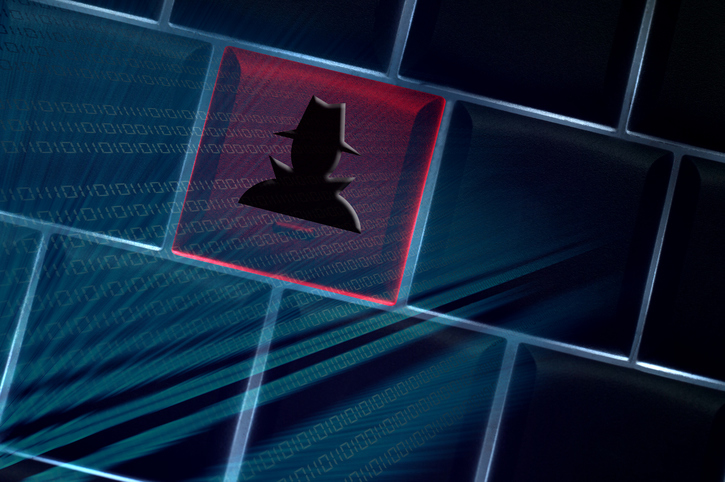As the number of news-making corporate cyber-attacks increased over recent years, cybersecurity has become top of mind for professionals of varying industries. The possibility of an untimely network shut down due to fraudulent activity is now a modern risk and reality that people need to be able to protect themselves against. One way to prevent this activity from occurring is to protect yourself from the most common cause, DDoS.
A DDoS (Distributed Denial of Service) attack is an attempt to make an online service unavailable by overwhelming it with traffic from multiple sources. Recovery from these types of attacks can take anywhere from a few hours to a few weeks, and some systems are never fully restored to their original state.

To best demonstrate the impact that DDoS attacks can have, this article will focus on K-12 education specifically, as schools are increasingly becoming a target for this type of activity.
Why are schools being targeted? For starters:
- Schools are typically vulnerable and unprepared for these types of attacks because few schools can afford to have a full-time IT person on staff dedicated to network security.
- Schools rely on technology for day-to-day operations.
- Students and faculty are increasingly bringing their own laptops, phones, and other personal devices to campus and connecting to the campus network, bringing in increased risks for cyberattacks.
- Students may be interested in carrying out these attacks for personal benefit.
It doesn’t necessarily take a sophisticated hacker to carry out a DDoS attack; students also have the knowledge and potential to breach the system. In many cases, a simple Google search can give a tech-savvy student the information they need to hack the school’s network. District Administration reported that two teenagers learned how to launch a DDoS attack from an online gaming site, and shut down their school district’s network for an entire month because of it.
What Could Go Wrong?
As more required testing is done through networks, attacks designed to bring down online testing events have become increasingly problematic. This is particularly concerning because it’s relatively cheap and easy to hire a hacker to implement this type of attack. For example, a student can pay a hacker just $20 on test day to bring down the system in order to get out of taking a test. To the student, it’s not unlike pulling the fire alarm to get out of a test.
But students are not always the perpetrators in these types of attacks. Cybercriminals are also seeking out these opportunities to use DDoS as a smokescreen to access proprietary and financial information from school servers. Schools that experience this type of data breach could face consequences from reputation damage to loss of funding.
A total shutdown can result in issues with:
- Registering students
- Grading
- Controlling student absence
- Paying for school lunches
- Physical camera security functionality
- Performing administrative work
- Distributing educational content
- Pursuing e-learning efforts
The list goes on. For the person carrying out the attack, they need to understand it’s a federal crime that will result in severe consequences.
Protecting Your Network from Total Shutdown
Unfortunately, DDoS attacks are not always easy to recognize, as they can be hard to differentiate from the normal ups and downs in network performance activity. While DDoS attacks can be difficult to prevent, the recommendations below can help to better protect your network from a cyber-attack and help your network to rebound more quickly should an attack occur.
Create a Defense Strategy
The best offense is a good defense. To ensure your school is protected from DDoS attacks, you must develop an IT security policy with defined security protocols that can be implemented school-wide. Having a detailed plan in place will help you mitigate potential damage.
Ensure that an incident response plan is in place just in case an attack does occur. It’s important that the faculty know the steps they need to take ahead of time in order to respond appropriately. Being proactive will help you rebound from an attack faster than if you ignored the potential for these types of threats.
Stay current with trends, signs, and patterns associated with DDoS. The more you know about them, the better prepared you’ll be.
Keep Hardware, Software, and Security Safeguards Up-To-Date
Even if you don’t think you’re at risk, it’s imperative your security safeguards are up-to-date. This will help protect you against an attack and ensure your infrastructure is as secure as it can be. Remember to:
- Use a Firewall for your school’s internet connection
- Install, use, and regularly update anti-malware, anti-virus, and anti-spyware software on every computer in your school
- Download and install software updates as they become available
- Monitor your systems continuously to detect potential problems
- Create a BYOD policy for students and staff to ensure they are securely connected to your network
- Protect network passwords
Being proactive and implementing the recommendations above will not only help you prevent DDoS attacks but other types of cyberattacks as well.
Educate Students and Faculty
Everyone involved with the school needs to be mindful of the risks not only associated with the attacks, but also the consequences associated with carrying out this type of federal crime. According to K12 USA, a 17-year-old Idaho high-school student launched a DDoS attack on his entire school district, crippling the system for more than a week. Students ended up losing all their work, and the Idaho Standard Achievement tests were destroyed. That student now faces expulsion and felony charges.
The more educated students are about the consequences, the less likely they’ll be to implement an attack. The more educated teachers are about warning signs and patterns, the more likely they’ll be to stop these attacks before they happen.
Bring in the Experts
School faculty already have enough on their plates, and worrying about a potential network shutdown shouldn’t be added to their “to-do” lists. If a school can afford to have an IT staff, the IT staff is often consumed with the demands of electronic classrooms and making sure education-related systems are running appropriately.
If this is the case with your school, consider outsourcing the network security to an IT specialist or managed service provider who can focus all of their attention on it. While there are many IT specialists, consider working with one who has previous experience in the K-12 education system.
It’s also important that you work with your internet service provider to see if they offer DDoS mitigation services. If so, they may have the ability to detect DDoS attacks and reroute traffic in the event an attack does happen.
Hackers are targeting school systems because they are currently an easy target. The more prepared you are, the less likely a hacker will be to successfully bring down your system. By setting up plans to successfully defend, mitigate, and restore things back to normal in the shortest amount of time, the most damaging effects of these attacks can be minimized or avoided completely.
For more information on how Cox Business can help secure your network, visit:
http://www.coxbusiness.com/k12security


